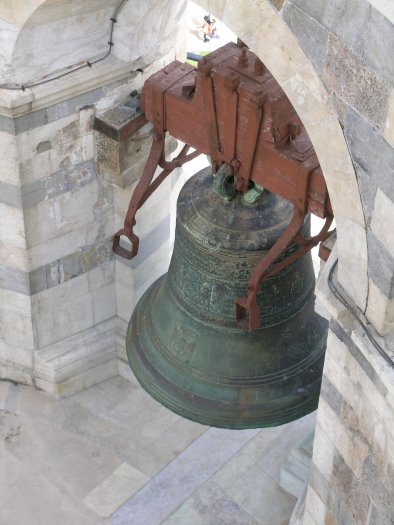The Leaning Tower of Pisa didn't begin its existence at an angle, but it has remained that way for hundreds of years.
 The third-oldest structure in the Italian city of Pisa, the eight-story white marble Tower measures 13.42 feet wide at the base and 8.14 feet at the top. Famously, the Tower leans at an angle of just less than 4 degrees. One side is 186 feet tall; the other side is 183 feet tall.
The third-oldest structure in the Italian city of Pisa, the eight-story white marble Tower measures 13.42 feet wide at the base and 8.14 feet at the top. Famously, the Tower leans at an angle of just less than 4 degrees. One side is 186 feet tall; the other side is 183 feet tall.
Construction on the ground floor of the freestanding bell tower began on August 14, 1173. Five years later, with building progressing to the second floor, the ground under the Tower began to sink in unstable soil. Building mostly stopped for 99 years as skirmishes took place between Pisa and Florence, Genoa, and Lucca. (One exception was the installation of clocks on the third floor, in 1198.) In the meantime, the soil beneath the Tower settled a bit but not enough to remove the tilt.
Construction resumed full-time in 1272 and went on for another eight years, during which builders tried to compensate for the tilt by making one side of the upper floors taller than the other. The unintended result is that the Tower is on a bit of a curve as you look upward.
The seventh story was finished in 1319. The final story, the bell chamber, was completed in 1372.
 The bell chamber has seven bells, one for each note of the musical scale. A spiral staircase containing nearly 300 steps leads to the top. On the bottom story are 15 arches; the second through seventh stories have 30 arches; 16 arches dot the bell chamber.
The bell chamber has seven bells, one for each note of the musical scale. A spiral staircase containing nearly 300 steps leads to the top. On the bottom story are 15 arches; the second through seventh stories have 30 arches; 16 arches dot the bell chamber.
In the years since construction was completed, the Tower has continued to shift, if ever so slightly. Combined, the seven bells weigh more than 23,000 pounds (and they are at the top.) In 1990, officials closed the Tower for restructuring, removing 50 cubic yards of soil from below the higher side. The result was a straightening by 18 inches. The Tower reopened in 2001. Seven years later, engineers removed another large amount of soil, enough to conclude that the Tower had stopped shifting altogether.
The Tower's tilt is the major tourist draw, with millions of visitors visiting Pisa each year to see the famous "lean."
Some mysteries remain, however. To this day, historians cannot agree on the name of the original architect.